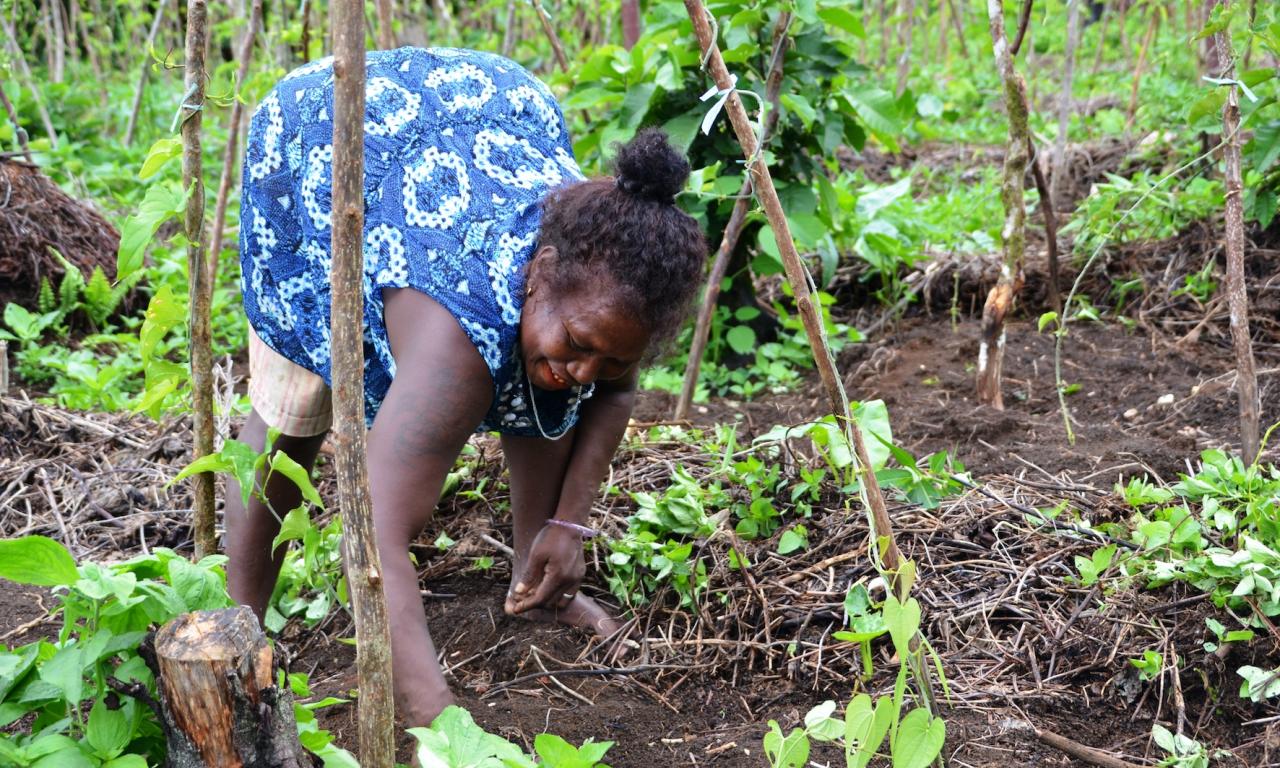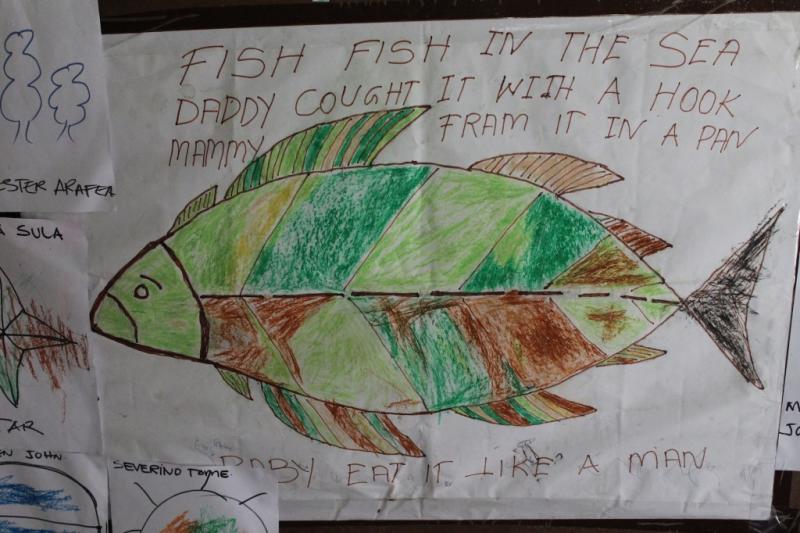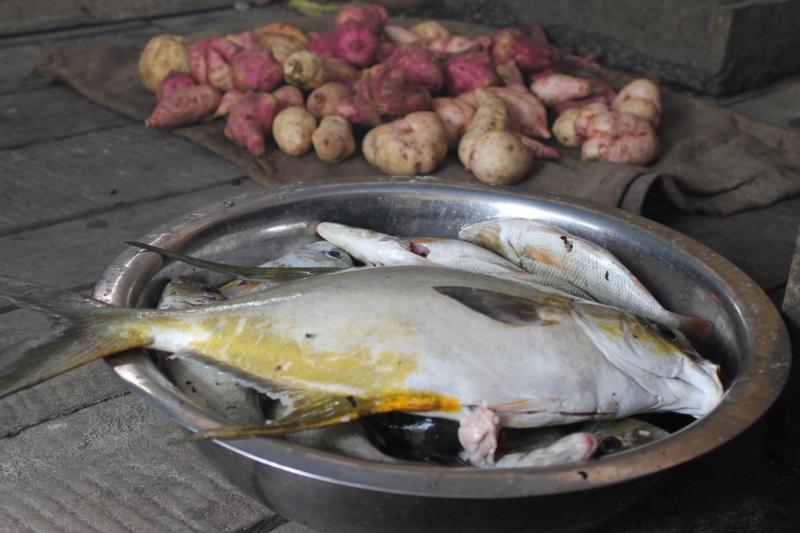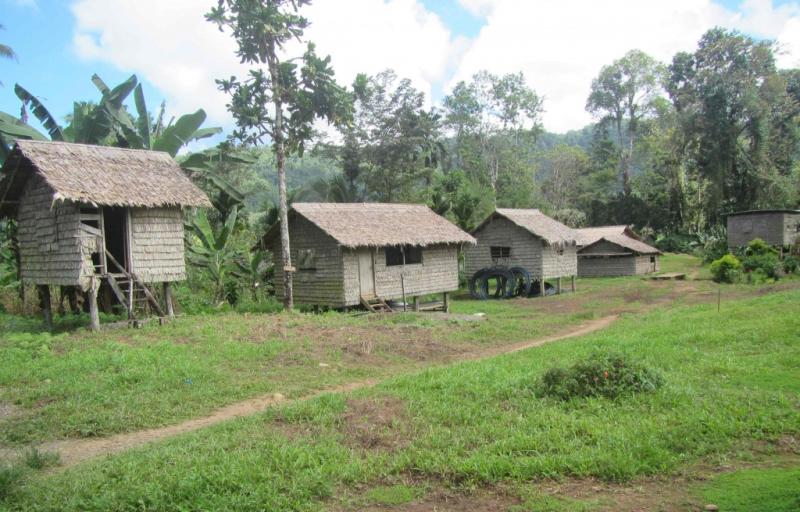
New WorldFish research from Solomon Islands published this month shows that gender inequality can impact women’s and men’s ability to adapt and innovate to maintain and improve their well-being.
Recommended publications
In the past, environmental, agricultural and fisheries management and research have been focused mostly on habitats, crops and stocks.
While this focus remains necessary, it is evident that to address sustainability challenges, management and research will need to equally, and simultaneously, engage with the social dynamics and outcomes of global environmental change.
Gender inequality, is one such dynamic, which new WorldFish research from Solomon Islands published this month shows can impact women’s and men’s ability to adapt and innovate to maintain and improve their well-being.
The paper, titled Understanding adaptive capacity and capacity to innovate in social-ecological systems: Applying a gender lens, is part of a special issue of the journal Ambio, which provides reflections and evidence of how to effectively link gender research with understandings about vulnerability, resilience and adaptation to global environmental change.
Gender norms in Solomon Islands

In the developing nation of Solomon Islands, a country consisting of six major islands and over 900 smaller islands, rural livelihoods and human well-being are tightly tied to agriculture and fisheries.
But these livelihoods are under pressure from challenges associated with rural and remote geography, increased extreme weather events due to climate change, and competition for resources through commercial enterprise.
To better understand individuals’ ability to cope with such pressures, we researched how gender influences people’s adaptive capacity – their ability to navigate inevitable environmental, economic or social shocks – and capacity to innovate – their ability to instigate and drive changes that they view as favorable.
These capacities are shaped by gender norms – the social expectations of how a man or woman should behave.

As part of the research, we conducted 75 hours of focus group discussions and interviews with men, women and youth from three communities in which WorldFish works in Solomon Islands.
Using methods based on the CGIAR’s GENNOVATE study, conducted across 125 rural communities in 26 countries, we analyzed the discussions of men, women and youth according to the five different constituents of adaptive capacity and capacity to innovate: assets, flexibility, learning, social organization, and agency.
The influence of gender norms on capacity to adapt and innovate
We found that there are distinct differences in men’s and women’s ability to find support, within or beyond their household, to navigate change and to pursue new livelihood opportunities.
For example, men had relatively greater access to new information and opportunities from development projects due to the way projects were delivered and how the government provided support to rural areas. These differences were driven by underlying gender norms.
Moreover, the study surfaced that the way in which rural development, agriculture or fisheries interventions have been delivered in the past have further affected these differences, either reducing or accentuating them.
This raises a key consideration highlighted by earlier research; where development interventions are sensitive to gender in the design and delivery of their programs, people who were previously marginalized are more likely to realize improvements in their inclusion and well-being.
Conversely, where interventions don’t account for differences, or exploit these differences to realize shorter term objectives, people can become further marginalized and, ultimately, have reduced capacities to adapt and to innovate.

In relation to the different norms influencing the labor divisions of men and women, our research found that gender roles were becoming less distinct to some extent.
For example, it seemed men were willing to take on a greater share of the domestic responsibilities, which are traditionally viewed as 'women's work'. This is due largely to broader social change, but also, in some instances, to changes accelerated by external initiatives.
Often, in existing research on adaptive capacity, the idea of ‘livelihood diversity’ is seen as a positive attribute. Yet our research, which applied a gender lens, found that despite women starting to experience some greater freedoms to undertake a range of livelihood pursuits, they now have a heavier “labor burden”.
While higher livelihood diversity may indeed turn out to be a positive attribute for future adaptation, it may limit or reduce women's more immediate well-being.
This finding illustrates the need to link gender studies and local perceptions of well-being to environmental and production-related research.
Recommendations to build capacity to innovate or adapt
Gender inequality and other forms of social inequality are widely acknowledged to adversely affect human well-being, and limit the scale and scope of environmental and production-related outcomes.
Research that applies a gender lens offers valuable insights into how management actions, governance institutions and markets shape how men and women are differentially involved, empowered, benefitting and bearing costs and risks.
But these understandings must be translated into environmental and production-related initiatives.
Otherwise, women – and poor or marginalized women in particular – will remain underrepresented and underserved in many rural development, governance and natural resource management interventions designed to help communities improve their wellbeing in the face of global environmental change.
Policies or initiatives that seek to build capacity to innovate or capacity to adapt will need to understand the ways in which these capacities are shaped by gender norms and relations. In short, initiatives will need to engage with men and women differently around innovation and adaptation.
Additionally, as discussed in previous blogposts on leveraging gender norms for developments and recognizing men that embrace gender equality, policies and initiatives will also need to work strategically with women and men together.
As Sarah Lawless, a co-author of this paper, states: “Even though the emphasis on gender is increasingly encouraged by donors and is viewed as ‘cross-cutting’ within many programs of development work, in practice gender is often still seen as something to be done by the gender experts or as the ‘business of women’. We still have some way to go”.
Author’s note: The Ambio special issue, of which this WorldFish paper is part of, represents a substantial step forward – a step made possible due only to the foundations built by those that are expert in the field. The issue is dedicated to all feminist scholars, practitioners and activists – female and male – who are committed to environmental conservation and management around the world. In particular, it is dedicated to the memory of Dr. Paula Kantor who made substantial contributions to raising the profile of the consequences of not considering social differentiation as development interventions forge ahead. Even more importantly, Paula’s work highlights the advantages and opportunities that arise when social inclusion and gender equity have been effectively promoted.